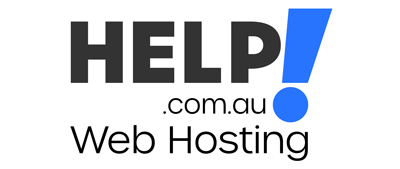DomainNames
Top Contributor
http://domainnamewire.com/2017/03/20/new-tld-registries-ask-75-cost-reduction/
With over 3000 global domain name extensions now there is no shortage of available domain name extensions people can choose. The fact is most new TLD extensions are rubbish and in many cases where extremely overpriced. Some are now available for 99 cents!
Any propaganda from Country domain admin bodies, ICAAN, Registry, Registrars, Resellers etc that Australia needs another competing .au extension is "fake".
The actual registration renewal and " drop" statistics show the .UK AND .NZ extra extensions have also failed miserably. Those who bothered to even register them initially have in many cases let them drop and not even renewed them. People have gone back to .co.uk and .co.nz. In most cases 94% of exsiting .co.uk owners have not even bothered with the .uk option. Most major companies have not registered it and they could easily have spent the money.
My advice is pay more and go for the .com, .com.au, .co.nz, .co.uk ETC. The end users and customers know and trust these extensions. If it is already registered try and buy it from the current owner or come up with another option but stick with those extensions.
_________________
After having tried numerous global extensions for trademark protection I have seen personally what failed, what was just a "Supply" con to black mail and scare existing registrants into defensive registrations and it was a pure waste of money.... people learn't and people did not renew!
.TV was really hyped up years ago as an example... it is now pretty much dead.
I firmly believe the information put out by some organisations in Australia that there was high demand and overwhelming majority support for a direct competing additional .au extension was false and in some cases the way it was marketed and put out was also misleading. Offering a "Yes Only" vote option in surveys to stack the yes vote result numbers was also in my view highly questionable and auDA should have taken action on those parties that did it.
99% of existing .com.au registrants have not even been made aware of the "supply pushed" proposal for an additional competing .au extnsion still. Why not?? auDA and Ausregistry have the full database of every existing registrant to inform them and invite them to comment and lodge objections or input? Now the .uk and .nz results are published no one can claim they have been successful and Australia should follow down their failed path also.
Where are the public disclosures how much auDA, Ausregistry / Neustar Inc USA etc will make from another .au extension per name registered and renewed? I did not see this sort of "transparency" on any surveys or the information put out motivating "yes" votes by numerous organisations and registrars/ resellers etc.
With over 3000 global domain name extensions now there is no shortage of available domain name extensions people can choose. The fact is most new TLD extensions are rubbish and in many cases where extremely overpriced. Some are now available for 99 cents!
Any propaganda from Country domain admin bodies, ICAAN, Registry, Registrars, Resellers etc that Australia needs another competing .au extension is "fake".
The actual registration renewal and " drop" statistics show the .UK AND .NZ extra extensions have also failed miserably. Those who bothered to even register them initially have in many cases let them drop and not even renewed them. People have gone back to .co.uk and .co.nz. In most cases 94% of exsiting .co.uk owners have not even bothered with the .uk option. Most major companies have not registered it and they could easily have spent the money.
My advice is pay more and go for the .com, .com.au, .co.nz, .co.uk ETC. The end users and customers know and trust these extensions. If it is already registered try and buy it from the current owner or come up with another option but stick with those extensions.
_________________
After having tried numerous global extensions for trademark protection I have seen personally what failed, what was just a "Supply" con to black mail and scare existing registrants into defensive registrations and it was a pure waste of money.... people learn't and people did not renew!
.TV was really hyped up years ago as an example... it is now pretty much dead.
I firmly believe the information put out by some organisations in Australia that there was high demand and overwhelming majority support for a direct competing additional .au extension was false and in some cases the way it was marketed and put out was also misleading. Offering a "Yes Only" vote option in surveys to stack the yes vote result numbers was also in my view highly questionable and auDA should have taken action on those parties that did it.
99% of existing .com.au registrants have not even been made aware of the "supply pushed" proposal for an additional competing .au extnsion still. Why not?? auDA and Ausregistry have the full database of every existing registrant to inform them and invite them to comment and lodge objections or input? Now the .uk and .nz results are published no one can claim they have been successful and Australia should follow down their failed path also.
Where are the public disclosures how much auDA, Ausregistry / Neustar Inc USA etc will make from another .au extension per name registered and renewed? I did not see this sort of "transparency" on any surveys or the information put out motivating "yes" votes by numerous organisations and registrars/ resellers etc.









